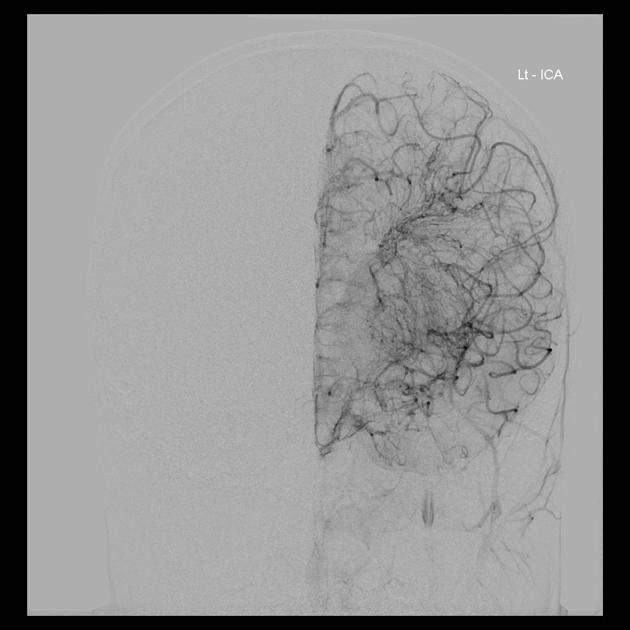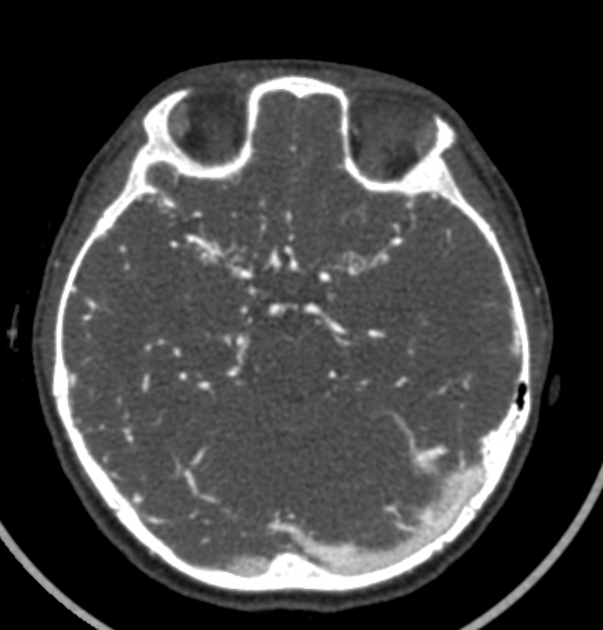Citation, DOI, disclosures and article data
Citation:
Gaillard F, Sharma R, Thibodeau R, et al. Moyamoya syndrome. Reference article, Radiopaedia.org (Accessed on 28 Mar 2025) https://doi.org/10.53347/rID-10725
Moyamoya syndrome, also termed moyamoya pattern or phenomenon or angiopathy, is due to numerous conditions that can cause arterial occlusion of the circle of Willis, with resultant collaterals, and appearances reminiscent of moyamoya disease.
These conditions include 1-4 :
-
1. Hsu SW, Chaloupka JC, Fattal D. Rapidly progressive fatal bihemispheric infarction secondary to Moyamoya syndrome in association with Graves thyrotoxicosis. AJNR Am J Neuroradiol. 2006;27 (3): 643-7. AJNR Am J Neuroradiol (full text) - Pubmed citation
-
2. Dähnert W. Radiology Review Manual. Lippincott Williams & Wilkins. (2007) ISBN:0781766206. Read it at Google Books - Find it at Amazon
-
3. Reeder MM, Bradley WG. Reeder and Felson's gamuts in radiology, comprehensive lists of roentgen differential diagnosis. Springer. (2003) ISBN:0387955887. Read it at Google Books - Find it at Amazon
-
4. Aviv RI, Benseler SM, Silverman ED et-al. MR imaging and angiography of primary CNS vasculitis of childhood. AJNR Am J Neuroradiol. 2006;27 (1): 192-9. AJNR Am J Neuroradiol (full text) - Pubmed citation
-
5. Jiang T, Perry A, Dacey RG et-al. Intracranial atherosclerotic disease associated with moyamoya collateral formation: histopathological findings. J. Neurosurg. 2013;118 (5): 1030-4. doi:10.3171/2013.1.JNS12565 - Free text at pubmed - Pubmed citation
-
6. Lazzaro MA, Cochran EJ, Lopes DK et-al. Moyamoya syndrome in an adult with essential thrombocythemia. Neurol Int. 2011;3 (1): e3. doi:10.4081/ni.2011.e3 - Free text at pubmed - Pubmed citation
-
7. Hua le H, Dodd RL, Schwartz NE. Concurrent stenoocclusive disease of intracranial and extracranial arteries in a patient with polycythemia vera. Case Rep Med. 29;2012: 151767. doi:10.1155/2012/151767 - Free text at pubmed - Pubmed citation
-
8. Kornblihtt LI, Cocorullo S, Miranda C et-al. Moyamoya syndrome in an adolescent with essential thrombocythemia: successful intracranial carotid stent placement. Stroke. 2005;36 (8): E71-3. doi:10.1161/01.STR.0000174193.89864.55 - Pubmed citation
Multiple choice questions:
Promoted articles (advertising)










 Unable to process the form. Check for errors and try again.
Unable to process the form. Check for errors and try again.